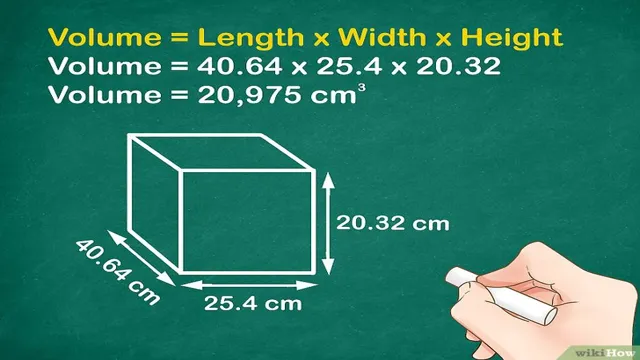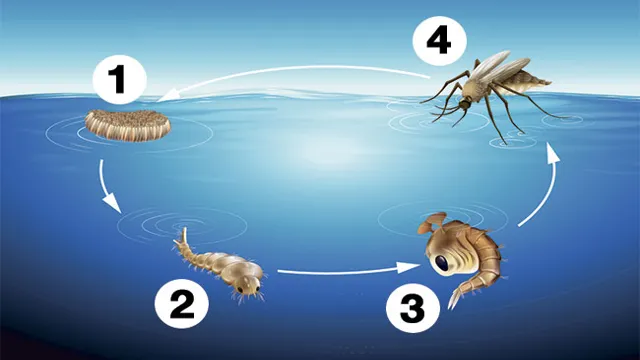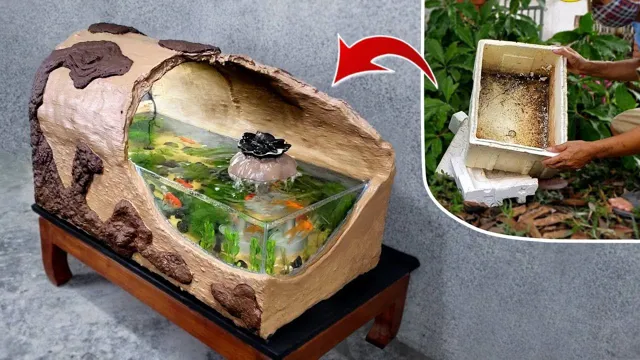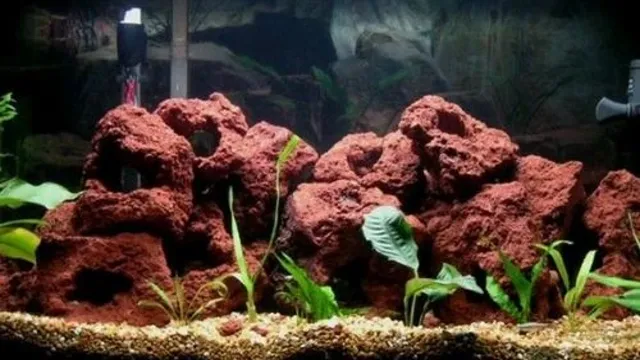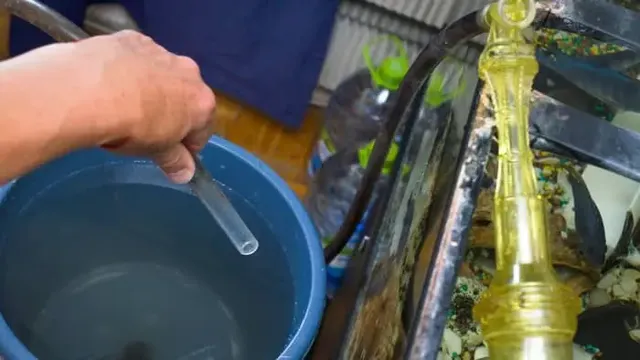If you’re a dedicated aquarium hobbyist, you know that calculating the volume of water in your aquarium is the first step in ensuring a healthy aquatic environment for your fish. But how do you calculate the liters in your aquarium, and why is it important? Knowing how much water your aquarium can hold is critical for dosing medications, determining appropriate filter size, and ensuring proper water changes. In this blog post, we’ll dive into the tips and tricks to help you accurately calculate the liters of your aquarium while also discussing the importance of maintaining a suitable aquatic habitat.
What You Need
When it comes to setting up an aquarium, one important thing to consider is its size. Knowing how to calculate liters in an aquarium is crucial if you want to provide the right environment for your aquatic pets or plants to flourish. To determine the volume of water in your aquarium, you must measure its length, width, and height in centimeters.
Once you have these measurements, multiply them and divide the result by 1000. This will give you the total number of liters in your aquarium. Keep in mind that it’s important to choose the right size of aquarium based on the species you intend to keep, as some fish or plants may require specific conditions to thrive.
Properly calculating the tank’s volume will let you provide the appropriate equipment, such as heaters and filtration systems, and maintain the right water parameters such as temperature, pH, and hardness. Remember, a healthy aquarium is a happy home for your aquatic pets and plants, and proper measurement is one necessary step to achieve it.
Measuring Tape/Ruler
When it comes to measuring, having the right tools is crucial. Whether you’re a professional tailor or simply trying to complete a DIY project, a measuring tape/ruler is essential. But what exactly do you need? Well, first and foremost, you’ll need a measuring tape.
These come in a variety of lengths, so choose one that suits your needs. Longer tapes, such as those that are 25 feet or longer, are great for larger projects, while smaller tapes are perfect for quick measurements. Additionally, you’ll want to look for a tape that is easy to read with clear markings, and that locks into place so your measurements are accurate.
If you’re looking for a more stationary option, a ruler may be a better choice. These are typically shorter than measuring tapes and come in a variety of materials, including plastic, metal, and wood. Look for a ruler that has both metric and imperial measurements, ensuring you can use it for any project.
Overall, investing in a high-quality measuring tape/ruler is a wise decision that will make measuring a breeze.
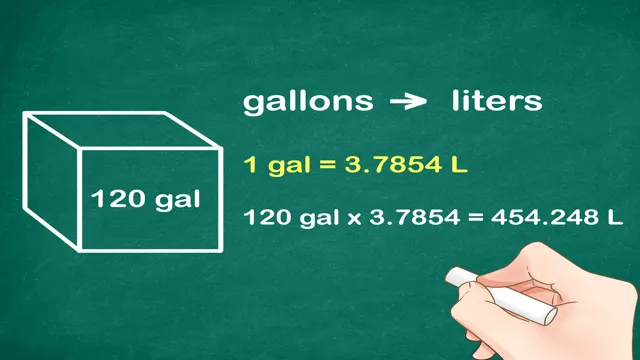
Calculator
Are you looking to purchase a calculator? There are a few things to consider when selecting the best one for you. First and foremost, you need to know what type of calculator you need. For general math calculations, a basic calculator will do the trick.
However, if you’re a student or professional in fields such as engineering, science, or statistics, you may require a scientific or graphing calculator. It’s also important to consider the size of the calculator. If you’re on the go, a smaller handheld calculator may be more convenient.
On the other hand, if you’re using the calculator primarily at your desk, a larger display and keypad may be preferred. Other features to consider include battery life, durability, and price. Take into account your specific needs and find the calculator that will best serve you.
Measuring Your Aquarium
Calculating the liters in your aquarium is essential to ensure that the environment is suitable for your fish. There are several ways to measure the volume of your aquarium, but the easiest and most accurate method is by using a water meter or a liter scale. To determine the water volume, measure the length, width, and height of your tank in centimeters, then multiply these numbers together. (See Also: How to Clean Fish Aquarium Tank: A Step-by-Step Guide for Sparkling Water)
Next, divide the result by 1000, and you’ll have the number of liters in your aquarium. For example, if your aquarium has a length of 80 cm, a width of 50 cm, and a height of 40 cm, the calculation would be as follows: 80 cm x 50 cm x 40 cm = 160000 cm³ 160000 cm³ ÷ 1000 = 160 liters Another way to determine the volume of your aquarium is by filling it with water and measuring the amount of water used. Keep in mind that decorations, substrate, and rocks can increase the water volume and affect the accuracy of the measurement.
In conclusion, measuring the liters in your aquarium is a crucial step in maintaining a healthy and happy fish environment. By accurately calculating the water volume, you can ensure that the water parameters and equipment you use are appropriate for the size of your tank. So, take the time to calculate the liters in your aquarium, and your fish will thank you for it!
Measure Length, Width, and Height
When it comes to aquariums, one of the essential tasks you’ll need to do is measuring your aquarium. You’ll need to measure the length, width, and height accurately to ensure the correct aquarium size. Measuring your aquarium is relatively easy, and you’ll need a measuring tape or ruler.
Start by measuring the length of the glass or plastic aquarium, followed by the width. Ensure you measure from the inside of the aquarium. Lastly, measure the height or depth of the aquarium.
By measuring all three dimensions, you’ll have the exact size of the aquarium. This measurement is essential when it comes to purchasing the right aquarium cabinets, stands, and hoods. Additionally, it will help you determine how much water you need to fill it up, how much gravel or sand to add and what size filtration to get to ensure ideal water conditions for your fish.
So, take your time when measuring your aquarium, and you’ll have a better aquarium experience in the long run.
Convert Measurements to Centimeters
If you want your aquarium to be a cozy, safe environment for your fish, it’s imperative to measure it properly. Most aquariums come in a range of sizes and shapes, which can make measuring them a little challenging if you aren’t familiar with the metrics used. However, don’t let that intimidate you! By converting the measurements to centimeters, you can easily keep track of the dimensions.
Centimeters are a universally accepted measurement scale and are used in most parts of the world, so it’s always a good idea to work with them. When measuring your aquarium, you should get the length, width, and height of the tank. Once you have these measurements, convert them all to centimeters by multiplying them by
5 For example, if your tank is 24 inches long, multiply that by 54, and you’ll get 60.
96 cm. Do the same for the width and height measurements. By converting all measurements to centimeters, you can easily compare them to the dimensions of fish tanks available in the market, so you know what aquarium sizes can fit your needs.
Remember, measuring your aquarium is crucial, and accuracy is essential. You don’t want to end up getting a larger or smaller aquarium than what you and your aquatic pets require. Use a measuring tape and ensure that you are measuring to the nearest millimeter possible. (See Also: How to Prepare for a Power Outage for Aquariums: Tips and Tricks)
Centimeters are easy to work with, and it’s crucial to know how to convert them to inches or feet. By doing so, you’ll be able to determine the ideal dimensions that your aquarium should follow. With the proper measurement, you can make sure that your fish will have ample swimming space and that the aquarium holds up well against all the water pressure.
Calculating the Liters
If you’re an aquarium enthusiast, you must know how critical it is to calculate the liters of water in your tank to keep it thriving. Calculating liters is crucial for determining the correct dosages of chemicals, food, and additives you need to add to your aquarium to keep your aquatic life healthy. To determine the liters, you need to measure the tank’s length, width, and height in centimeters.
Multiply those measurements together, then divide the total by 1,000 to get the total liters of water in your aquarium. Now that you know how easy calculating liters can be, you won’t miss out on providing the necessary amounts of everything your aquatic life needs to thrive. Stay ahead, be informed, and take care of your aquarium the right way.
Multiply Length x Width x Height
Calculating the liters of a container requires a simple formula: you need to multiply the length, width, and height of the container. This will give you the total volume, measured in cubic centimeters (cc). Once you have this number, you can convert it to liters by dividing it by 1000.
For example, if you have a container that measures 20 cm by 30 cm by 40 cm, you would multiply 20 x 30 x 40 to get 24,000 cc. Then, you would divide 24,000 by 1000 to get 24 liters. It’s important to remember to use the same unit of measurement for all three dimensions.
For instance, if the length is measured in inches and the width and height are measured in centimeters, you need to convert everything to the same unit before performing the calculation. This simple formula can be applied to all kinds of containers, from bottles to boxes to tanks.
Divide Answer by 1000
To calculate how many liters are in a volume of liquid, you need to divide the answer by 1000. This is because one liter is equal to 1000 milliliters. So, if you have a total volume of 5000 milliliters, you would divide that by 1000 to get 5 liters.
It’s important to remember to adjust the decimal point accordingly when doing this math. Let’s say you’re trying to calculate the volume of a swimming pool. You measure the length, width, and depth of the pool in meters and get a total volume of 50,000 cubic meters.
To convert this to liters, you would divide 50,000 by 1000, which would give you 50,000 liters. That’s a lot of water! Another example could be calculating the amount of gasoline you need for a road trip. If your car’s gas tank has a capacity of 50 liters and you want to travel 1000 kilometers, you can estimate that you’ll need about 10 liters per 100 kilometers.
That means you’ll need to fill up your tank 5 times during the trip. In summary, dividing the answer by 1000 is an important step in calculating the volume of liquid in liters. It’s a simple concept, but it can be very useful in a variety of situations, from measuring the volume of a swimming pool to estimating how much gas you need for a road trip.
Conclusion
So, there you have it, folks! Calculating the liters in your aquarium is a simple but crucial task for any responsible fish owner. By following these easy steps and formulas, you can ensure that your aquatic friends are living in a healthy environment that meets their needs. And who knows, maybe you’ll become such a pro at calculating liters that you’ll start throwing around fish tank dimensions like a real-life aquatic architect. (See Also: How to Deal with Aggressive Fish in Aquarium: Tips and Techniques)
So go forth and measure, calculate, and conquer the aquatic world!”
FAQs
What is the formula to calculate the volume of water in an aquarium in liters?
The formula to calculate the volume of water in an aquarium in liters is: length (cm) x width (cm) x height (cm) / 1000.
How many liters of water does a standard 10-gallon aquarium hold?
A standard 10-gallon aquarium holds approximately 37.85 liters of water.
How do I accurately measure the dimensions of my aquarium to calculate the volume in liters?
You can accurately measure the dimensions of your aquarium using a measuring tape, making sure to measure the length, width, and height in centimeters.
What is the recommended amount of water to add to an aquarium per fish?
The recommended amount of water to add to an aquarium per fish is three to five gallons of water.
How often should I change the water in my aquarium to maintain a healthy environment for my fish?
It is recommended to change 10-20% of the water in your aquarium every 1-2 weeks to maintain a healthy environment for your fish.
How do I convert gallons to liters when calculating the volume of water in my aquarium?
To convert gallons to liters, multiply the number of gallons by 3.785.
How much water should I add to my aquarium if I want to change 50% of the water volume?
To change 50% of the water volume in your aquarium, add an amount of water equal to half the total volume of your aquarium.

